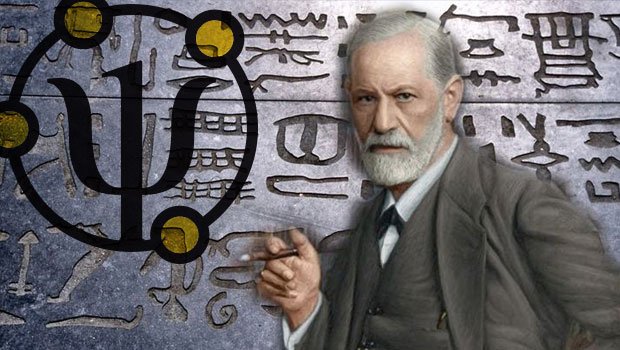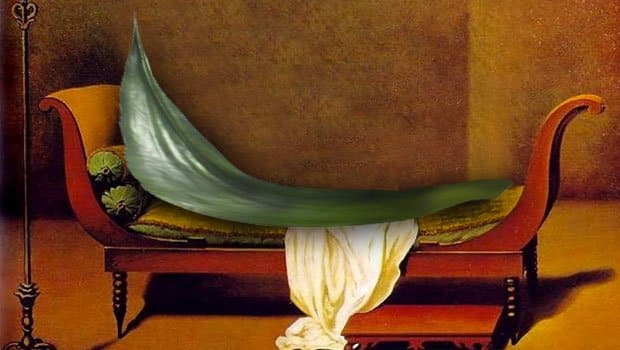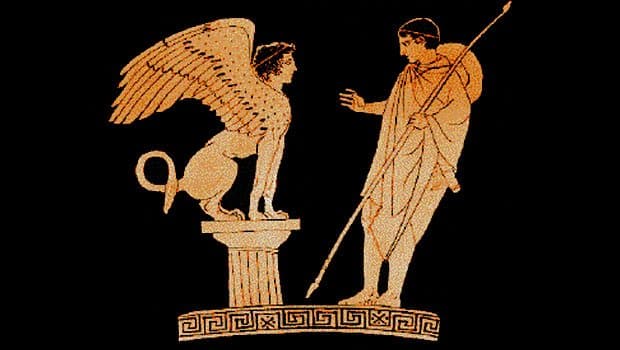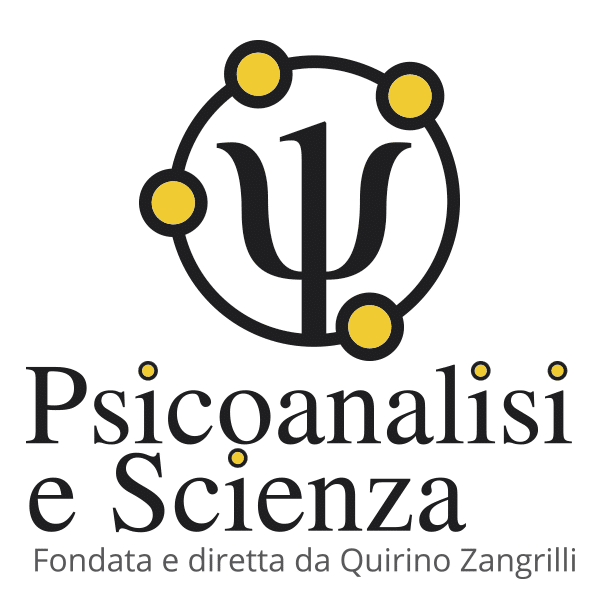Sommario
The present work constituted an official report in the interdisciplinary Conference “Sogno & psicopatologia” (Dream & psychopathology) which took place in Capo d’Orlando the 17th and the 18th November, 2000.
Already published in Sogno e telepatia, Sogno & psicopatologia (Dream and telepathy, Dream & psychopathology), Bollettino dell’ Istituto Italiano di Micropsicoanalisi, Tirrenia Stampatori, 2001
Throughout 20 years of work I have had the opportunity of collecting a series of cases of telepathy, which is the transmission of information at a distance beyond the usual sensory perception channels. Of course they have at all times aroused my curiosity but, even so, I have always been cautious in treating such a matter therefore leaving this precious material aside for a long time.
Yet, the recurring reading that I do of Freud’s complete works has made me wonder if keeping such material in the shade means to surrender to the pressure of a certain social moralism that pervades the scientific world.
Or, to put it in the Master’s words: “It is almost certain that dealing with occult phenomena will soon lead to the confirmation that a good number of them really occurs; it is nevertheless to suppose that it will take a long time before reaching an acceptable theory in regard to these new facts.” 1
Sigmund Freud has exposed in a direct way his convictions regarding the theme of telepathy in two writings: “Psychoanalysis and telepathy” and “Dream and telepathy” both compiled in 1921.
The first one, in the form of a manuscript, read to the members of the so-called “Committee” during a trip to the mountains, was found among his papers and published posthumously. In fact Freud published the latter, which was much more cautious than the former and was originally the report which was to be read at the Psychoanalytic Society of Vienna, in the magazine Imago in 1922.
In both works the concern is explicit to delimit the borders between the young psychoanalytic science and the so-called “occultists”: He essentially recognizes a similarity between the two worlds, at least for the difficult position that both had to deal with phenomena which the official science of the time “counts among those things that are between sky and earth”. But, prefiguring the likely developments, Freud underlines how the large majority of occultists is not driven by thirst for knowledge, but by an uncritical faith, heritage of the ancient religious faith which has been worn away by the progress of the scientific knowledge throughout the history of humanity. He also warns of the possibility that some scientific recognition of the existence of phenomena not explainable by the usual sensory transmission procedures, may allow the occultists to project themselves above science, hailed with exultation as the redeemers from the intellectual constraint of reason, reaping the harvest of all the easy credulity that survives from the infancy of human history and from the children’s years (the magical thinking) of each individual.
In both writings Freud expressly recognizes the existence of phenomena of thought transmission and gives it as the last explanation of the so-called phenomena of divination. He treats different cases of future forecast and concludes that, in reality, the Clairvoyant has not read the future of the events, but the knowledge and tendencies that the examined person had at the moment of the consultation and had not transmitted to the sensitive with the usual sensory systems. With regards to one of these cases the Master writes: “The event becomes perfectly clear if we are inclined to suppose that this knowledge has transferred from him to her, presumed prophetess, through unknown ways and with exclusion of the communication methods that everybody knows. Therefore, our conclusion should be that thought transmission exists” 2
I believe that anyone who has enough experience of the analytical work has no difficulty in ascertaining that the extrasensory perception of psychic contents is a frequent phenomenon. Often, the associations of an analyzed person, frequently after a period of closure, begin again from the analyst’s ideational contents without him transmitting at all and in any way, by words or gestures, the information to the analyzed person. To illustrate my idea I will simply report the last experiences that I have gathered in order of time.
The day before the session which I am going to describe I had gone to see a dear friend of mine at the station of Anagni-Fiuggi. While we were waiting for the train arrival we had been struck by the beauty of an antique gazebo in wrought iron, completely covered with a wonderful woodbine which shaded an antique stone bench. A scene of true poetry if compared to the cold and impersonal fittings of some modern railway stations.
The next day, through inscrutable associative courses, the memory of that scene came back to my mind during the session. These are, at a distance of a few seconds, the associations of the woman in analysis: “I have seen a flash image, which has nothing to do with the things I’m saying, of a type of wicker bench with some women sitting on it. One fair haired woman, almost white, with red lips. She seems a woman of the 19th century and it is as if they were sitting in a small railway station.”
On this subject I will say that the manifestation of telepathic phenomena in session is proportional to the observance of the two specular rules of free associations for the patient and fluctuation of attention for the analyst. As everyone who is interested in psychoanalysis well knows, while analyzed people undertake in talking about anything they think or feel, through free associations and without submitting them to any criticism, the analyst practices a particular quality of listening, called fluctuation of attention, which consists in making abstraction from everything that he thinks or feels and in following the analytical material without privileging anything. Precisely in the work “Psychoanalysis and telepathy” Freud makes an indirect reference to such a technique when he tries to explain how a transmission of information, from a client to a presumed diviner who uses the usual techniques of astrological divination, can have occurred: “The astrological work of the diviner would consist, in this case, in an activity intended to divert her own psychic strengths and keep them busy with something harmless, so that she may become receptive and permeable to the effects of other people’s thoughts, and therefore she may turn into a real “medium”. 3
One day, another analyzed man brought in session a dream whose final part was the following scene: “A man comes and tells us that in his garden, bordering our house, a tree, perhaps a willow, is dying, and he wants to know if we are to blame”. As often happens, the session took a turn therefore not permitting a systematic dream interpretation. But in the following session, the patient, clearly struck, told me that he had received a phone call from a cousin of his, who lived more than a thousand kilometres away and from whom he had not heard anything for months: his cousin had phoned him, the day after the session of the dream mentioned above, to complain about the felling of a tree, situated on the border between the vacation houses of the two cousins, decided by the patient’s sister without his knowledge. It is clear that the dream had transmitted to the patient’s psychism a piece of information about an objective event that was happening or had just happened at a distance.
Now, I would like to introduce you to a detailed report of two experiences that acquire a fundamental importance, since the transmission of information has synchronously involved more members of the same family who resided hundreds of kilometres away from each other.
First case:
The person in question is an analyzed man that we would define normal (that is free from pathogenic nuclei), an absolutely reliable source and with a university scientific culture. He is undertaking booster sessions at a distance of years from the end of his personal analysis.
In the period preceding the telepathic experience the man had spent several restless nights, bound by the feeling of perception, in the room where he slept, of ghosts that he couldn’t identify. The rational systematization given to the perception was that “he felt” the dead of his family trying to warn him of an incipient danger.
On arrival at my study, seeing a lorry tank full of fuel, the patient quickened his pace, caught by an unusual fear that the fuel could explode.
During the session he had reported that he was invaded by powerful and unequivocal feelings of impending danger connected with a strong explosion or a fire, however a situation of dangerous impact, and by the feeling that the life of his father, who lived more than a thousand kilometres away, was in danger. Particularly, he had perceived at different times the visual image of a globe of light, or fire, or energy impending over the scene.
I’d like to make it clear that the man had not heard from his father for over one month, meticulously following the analytical instructions, which sometimes become necessary, to interrupt, for a short period, the telephone or letter contacts with relatives.
At the same time the patient’s wife had felt some strange anxiety sensations that something was going to happen to her elderly grandmother. She truly feared that her grandmother was in impending danger of death; the lady phoned some relatives who reassured her, but even so, she continued to be troubled by sorrowful sensations of danger.
The next day the analyzed man spent a night of great suffering, passed sleepless by the onset of a very painful affection, which presented the symptomatic picture of an attack of scapulo-humeral periarthritis, with the exception of an unusual symptomatology: an intolerable pain, affecting the entire right side of his body, from the shoulder to the tip of his toe, so sharp that he expressed the fear of having a heart attack and dying.
The same night his wife has an anxious dream of which she only remembers a strong and unpleasant feeling: an extraneous hand laid on her shoulder which suddenly falls away.
After the sleepless night, clearly tried, the analyzed man goes to buy some aspirins although the pain has almost disappeared inexplicably. Immediately outside the drugstore, his wife, usually free from bouts of absent-mindedness, drops the car keys. Now I have to give further details even though they will seem extravagant: the analyzed man tells me that the car keys, contained in a red leather keyring, are literally sucked into a gully-hole. The situation is so unusual that the man thinks that “someone” wants to warn him that there is a danger connected with the car. However, after much effort, he succeeds in recovering the keyring that, being totally covered in slime, is then washed. Evidently being dyed, the keyring starts dripping drops completely similar in colour to blood: the leather keyring is pouring blood.
The next day, the patient’s father is victim of a car accident where he suffers a large lacerated and contused wound to the cranial vault which will need the application of sixty-five stitches, and several wounds especially widespread in the right side of his body. The only detail that the elderly gentleman remembers before the impact is the vision of a globe of light that he relates to a phenomenon of dazzle. In the confused memories of the immediate post-trauma he only remembers expressing several times, to his rescuers, the fear that the car caught fire because of the loss of fuel. Inveterate smoker, he had given up smoking a week before the accident.
The same night the sister of the patient’s father has an anxious dream where she feels a hand, separated from its body, laid on her right shoulder, which guides her; as you can see, a manifest content almost superimposable to the one of the patient’s wife, who is more than a thousand kilometres away. The awakening, for both, is associated to the painful detachment of the hand contact.
Second case:
Two brothers, who are nearly the same age, are bound by an intense affective relationship which is supported, as often if not always happens, by powerful unconscious drives of homosexual attachment. They reside for the first time in their lives at a distance of about six hundred kilometres for a long period (one year, since the elder one, that we shall call Ulisse, has contracted a serious pathology that can only be treated in a great university hospital away from his permanent address).
A few months before the separation of the two young men, their paternal grandmother, who feels a privileged affection towards Ulisse, falls ill with a serious tumoral form and heads towards a slow decline. During the following months she repeats many times that before dying she would like to see the beloved nephew again: this aim somehow almost seems to nourish the vital force that still opposes evil. The wait goes on but Ulisse cannot return to see his grandmother because he must undergo a daily specialistic treatment. The family custom is not inclined to frequent phone calls or correspondence: the mobile telephones were still far in the future and Ulisse and his brother, that we shall call Achille, were bound by such a deep affective relationship that they always felt in touch with each other.
Inevitably their grandmother gets worse until the young Achille receives a phone call from his relatives who inform him that the Lady’s end is just a matter of few hours if not minutes. Achille leaves to reach his grandmother who lives about thirty kilometres away, in a pleasant village. When he arrives at the room door of the dying woman, this, who had been in a comatose state for about ten hours, suddenly wakes up and has the strength to lift her head and say: “Ulisse?! ” Someone, maybe improvidently tells her: “It is Achille who has come to see you… ” A few seconds later the woman dies: the village bell tower, which rings every quarter hour, chimes at 11.30 p.m.. Achille is struck by the synchrony of the event and, glancing at his watch, mentally makes a note of the time.
The next day Achille is awoken by an agitated phone call received by his brother Ulisse who asks him, without giving him the time to join in conversation, if something has happened to their grandmother, as the previous night, shortly after he fell asleep, he had been awakened by some knocks at the door of his room. Still half asleep Ulisse had asked “Who is it? ” and on the other side of the door: “I’m nanna, Ulisse, I’ve just come to see you”. Ulisse recovered with a start his clearness of mind, with his heart in his mouth, inevitably, as would happen to anyone, he looked at the alarm-clock on his bedside table: 11.30 p.m.. Achille had been the medium between his brother and his grandmother.
No-one better than I, coming from the university studies of medicine, founded on a rigid mechanistic rationalism, can understand the automatic scepticism that arises in becoming acquainted with such events: yet I repeat that the cases I have described to you are only the most sensational and they come from source about which I cannot have no doubt.
On another occasion I have already expressed myself about the necessity that the university studies of Medicine and Psychology give space, for instance, to the quantum physics: sincerely I can’t understand the reason why on one hand the notions of special relativity and field physics are held in due consideration by the scientists of Nasa or the Russian Spatial Agency in order to design their space vectors and on the other hand they cannot enter the mental training of a future physician or psychotherapist.
But even if, originally, my intention was that to illustrate some knowledge of microphysics which allows taking comfort in admitting the existence of transmission of information at a distance, the repeated reading of Freud’s works has permitted me to remain in a more classical field.
Because the deep sharing of some of the basics of Psychoanalysis is enough to accept the existence of such a phenomenology and to consider it worth being subject of research and experimentation.
Now I must make a brief digression about the phenomenon of isolation as well as the negation and denial of the analytical knowledge that often concerns both analyzed people and analysts. Anyone who has had a noteworthy analytical training thoroughly knows how much of this work concerns the process of reducing the ideal ego and the attempt to reduce the projection to its lowest levels in order to agree on a vision that is free from phenomena of ideologization of reality: a titanic enterprise that never ends. The same Freud, in illustrating the so-called resistance of the unconscious, had put it in prominence. Psychoanalysis is not a multi-ownership house whose flats are occasionally rented for one’s profit: either the whole building is purchased and used or it is better not to call oneself a psychoanalyst. Moreover, nobody is forced to do so and, nowadays, judging by the race for distinction and revision that we can see, the “black list” decreases more and more. Conversely I have no shame and I am proud to call myself a Freudian.
Therefore, which are the Freudian concepts that allow us to accept the existence of the telepathic phenomena?
First of all the definition of primary process given by the Master.
Secondly the efficient mechanism of the unconscious defined as identification.
Let’s move on to the primary process.
“The processes in the unconscious or in the Id obey other laws than the processes in the preconscious Ego. We call these laws, as a whole, primary process, in contrast with the secondary process, which regulates the courses in the preconscious, in the Ego”. 4
And more: “We have learnt how the unconscious psychic processes are in themselves “out of time”. This means, firstly, that they are not chronologically ordered, that time doesn’t alter them and that the concept of time can’t be applied to them”. 5
The Freudian unconscious is by definition aspatial and atemporal: this is the reason why, for example, in an individual’s mind perceptions and self-sentiments, absolutely incompatible from the point of view of the secondary process, can live together: just to give a simple example, the same person can live himself as provided with phallus and have at the same time significant psychic experiences of castration. Furthermore, the absence of logical and space-time operators explains the apparent absurdity of dreams and their surreal aspect. In a dream, the places, epochs, shapes, usages, often the language too, mix in a chaotic medley in which the opposites coexist, the indeterminate and the concrete, contradictions and impossibilities.
Now we all know that the dream is the privileged psychic activity for the study of the unconscious. More precise information is necessary here: the unconscious is unknowable by definition: it is placed, to say it with Pierre Codoni’s words, “in another reality level to our psychomaterial world ” 6 after the overcoming of the distorting sieve of censorships. On the other hand we share, as I often love to say, the same uneasiness of the microphysicists who study the unknowable, postulated by Werner Heisenberg’s uncertainty principle, observing the indirect perturbations that the subatomic fields determine in the material objects.
Freud, in defining the contents of the unconscious, has systematically disciplined the speculative tendency that had allowed him to cast beams of light through the darkness of his epoch’s knowledge, considering it mostly constituted by representations repressed during the child’s psychosexual development and by the memorization of the quantitative and qualitative characteristics of the drive experiences subject to the repression. But in “An Outline of Psychoanalysis”, fortified by his second topic and by the definition of the concept of Id, Freud affirms, among other things: “1) The memory of the dream is much wider than the memory of the waking state. The dream brings memories forgotten by the dreamer, which were inaccessible to him in the waking state. 2) The dream makes an unlimited use of linguistic symbols whose meaning is mostly unknown to the dreamer. But we can confirm their meaning with our experience – and in the end -… the dream brings to light – be careful! – contents that cannot derive either from the mature life or from the dreamer’s forgotten childhood. One is forced to consider them as a part of the archaic inheritance that the child, influenced by the ancestors’ experience, brings with him in the world before any experience”. 7
As you can see it is a boundless opening to the endless capacities of dreams which recalls Pierre Codoni’s notes: “… the study of the dream directly connects us with the infinity of the unconscious and the infinity of the void. It lets us understand the primary process, the free energy that moves and condenses without limits, the absence of space, time and logic, the coexistence of the opposites, the complexity of instantaneousness. Therefore, this means that the dream itself is infinite, that its study is infinite, as well as the study of the unconscious and the one of universe”. 8
And now I would like to illustrate you a brief reflection on the identification.
In its classical definition the identification is the “psychological process by which a subject assimilates an aspect, a property, an attribute of another person and is transformed, totally or partially, according to the latter’s model.” 9
I believe that the identification is not only a psychological mechanism, but a somatopsychic mechanism so deep as to involve the cellular processes. The pathological elaboration of mourning, which is often followed by the identification to the lost object and the contraction of a morbid affection similar to that of the dead person, is the most evident example. As well as the pathologies contracted by children who have completed their psycho-sexual development in contact with a parent, especially the mother who is seriously ill. On a small scale the phenomenon of identification is observable in each analysis: they are, unfortunately, frequent pathological analyst-patient contaminations and vice versa, which only a careful work on the transference-countertransference dynamics can neutralize and also allow a brilliant use in order to make headway in the analytical work. To cite a further instance, the turning point in a difficult borderline case in which the only dominant theme was the persecutory perception of an indefinite Secret that was impending over the subject’s destiny, occurred in concomitance with an organic trouble of mine: a bothersome preputial irritation. As if by magic, the analyzed person found the associative connections that led him to deeply live again through a prepuce plastic operation for phimosis which took place when he was three years old, completely repressed, and concealed by the family entourage as well.
Besides this, I will tell you that the work nucleus of the patient who had perceived the paternal accident (first case), was exactly the dissolution of the identification drives to his parent.
To conclude, it can be seen that I haven’t given you any defined theory which can explain, in scientifically acceptable terms, the telepathic phenomenon; but I believe that the confirmation of phenomena of information transmission outside of the usual channels is subject to worthy studying which psychoanalysis can offer fertile ground for reflection and that science should begin a systematic research of such phenomena, in compliance with the modern standards of scientific nature in order to save them from the domain of occultism.
The anomy that rules our society, the total breakup of values and social references have opened the doors to irrational or even delirious visions of reality for a long time: millions of people spend their days practicing a voyeuristic mass activity, scrutinizing a few young fellows closed inside a house. The televisions, above all the public one which invests the citizens’ money, compete to propose transmissions which promise to let us enter, with pseudoscientific method, the Mysteries of humanity.
I cannot but make mine the Master’s words, as always prophetic: “… (The occultists) will be hailed as the ones come to free us from the heavy intellectual constraint, and all the credulity that still survives from the first days of human history and from the childhood years of the single individuals will move towards them with exultation. A dreadful collapse of the critical thinking could then be imminent… ” 10
Written by: Quirino Zangrilli © Copyright
* Translated by Flavio D’Ambrogio and Linda De Nardo
Notes:
1 – Sigmund Freud, Psicoanalisi e Telepatia, 1941, Opere, Vol. 9, Boringhieri, Torino.
2 – Sigmund Freud, Psicoanalisi e Telepatia, 1941, Opere, Vol. 9, Boringhieri, Torino.
3 – Sigmund Freud, Psicoanalisi e Telepatia, 1941, Opere, Vol. 9, Boringhieri, Torino.
4 – Sigmund Freud, Compendio di Psicoanalisi , 1938, Opere, Vol. 11, Ed. italiana: Boringhieri, Torino.
5 – Sigmund Freud, Al di là del principio di piacere, 1920, Opere, Vol. 9, Ed. italiana: Boringhieri, Torino.
6 – Pierre Codoni, Psicofisiologia del sogno, Bollettino dell’Istituto Italiano di Micropsicoanalisi, n°27-28, 1999, Tirrenia Stampatori, Torino.
7 – Sigmund Freud, Sogno e telepatia, 1941, Opere, Vol. 9, Ed. italiana: Boringhieri, Torino.
8 – Pierre Codoni, L’interpretazione del sogno, Bollettino dell’Istituto Italiano di Micropsicoanalisi, n°19, 1995, Tirrenia Stampatori, Torino.
9 – Laplanche, Pontalis, Enciclopedia della psicanalisi, 1968, Laterza, Milano.
10 – Sigmund Freud, Psicoanalisi e Telepatia, 1941, Opere, Vol. 9, Boringhieri, Torino.
Nel 2024 riceve il Premio Accademico d’Onore della Accademia Culturale Internazionale Cartagine 2.0.
Nel 2024 docente ad Almaty – Kazakhstan presso il workshop di psicoanalisi sul tema della violenza, promosso dall’Università di psicoanalisi di Mosca in collaborazione con l’Istituto svizzero di micropsicoanalisi.
Doctor Quirino Zangrilli was born in Fiuggi in 1955. Graduated with honours in Medicine and Surgery in 1980, he practices Psychoanalysis, with intensive method, since 1982. He is author of 72 scientific pubblications. He has attended as speaker or president of session to many national and international scientific Conventions. His book “La vita:involucro vuoto” (Life: empty involucre), published by Borla in 1993, has been in use by the Chair of Dynamic Psychology at Turin’s University since 1994. He is the author and founder of the multimedia review “Psicoanalisi e Scienza” (Psychoanalysis and Science), the most read Italian on line review of psychoanalysis. In 2012 he participated as a Speaker at the Scientific Festival of BergamoScienza. In 2013 he illustrated his research on the maternal-fetal interaction in the Special Session of the XI World Congress of Perinatal Medicine in Moscow with his relation “Intrauterine Imprinting”. He is visiting teacher at Moscow Institute of psychoanalysis and training psychoanalist of Swiss Institute of Micropsychoanalysis.
In 2024 he is a teacher in Almaty – Kazakhstan at the psychoanalysis workshop on the topic of violence, promoted by the Moscow University of Psychoanalysis in collaboration with the Swiss Institute of Micropsychoanalysis.
In 2024 he received the Honorary Academic Award of the Carthage 2.0 International Cultural Academy
Le Le Docteur Quirino Zangrilli est né à Fiuggi en 1955. Diplômé avec mention en Médecine et Chirurgie en 1980, il pratique la psychanalyse depuis 1982, en utilisant une technique intensive. Il est l’auteur de 72 livres et publications scientifiques. Il a participé en tant que conférencier ou président de session à de nombreuses conférences scientifiques nationales et internationales. Son livre “La vie : enveloppe vide”, publié par Borla en 1993, est adopté depuis 1994 par la Chaire de Psychologie Dynamique de l’Université de Turin. En 1994, il a reçu le “Prix national Ciociaria de médecine”. Il a conçu et fondé le magazine multimédia “Psicoanalisi e Scienza”, qui est le magazine de psychanalyse en ligne en italien le plus suivi au monde. (Source : Entireweb, Alexa, Google, Virgilio, Arianna., etc.). En 2012, il a participé en tant que conférencier à la colloque scientifique de BergamoScienza. En 2013, il a exposé ses études sur l’interaction materno-fœtale lors de la session spéciale du XIe Congrès mondial de médecine périnatale à Moscou avec le rapport “Intrauterine Imprinting”. Il est chargé d’enseignement au cours de spécialisation de trois ans en psychanalyse, psychothérapie psychanalytique et consultation psychanalytique à l’Université de Moscou. Il est membre didacticien de l’Institut Suisse de Micropsychanalyse et de la Commission pour la Pratique de celui-ci.
En 2024, il enseigne à Almaty – Kazakhstan à l’atelier de psychanalyse sur le thème de la violence, promu par l’Université de Psychanalyse de Moscou en collaboration avec l’Institut Suisse de Micropsychanalyse.
En 2024, il reçoit le Prix Académique Honoraire de l’Académie Culturelle Internationale Carthage 2.0.
В 2024 году является преподавателем в Алматы – Казахстан на семинаре по психоанализу на тему насилия, проводимом Московским университетом психоанализа в сотрудничестве со Швейцарским институтом микропсихоанализа.
В 2024 был награжден Почетной академической премией Академии Международной Культуры «Карфаген 2.0».












